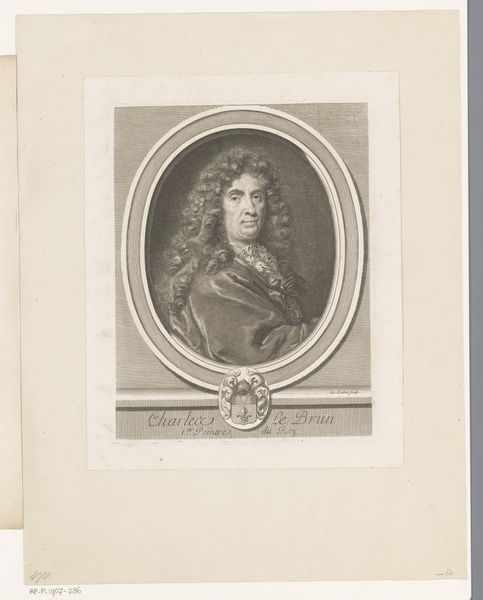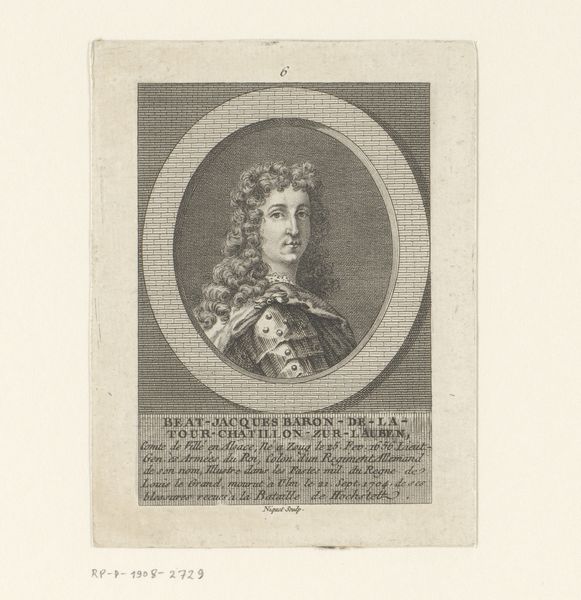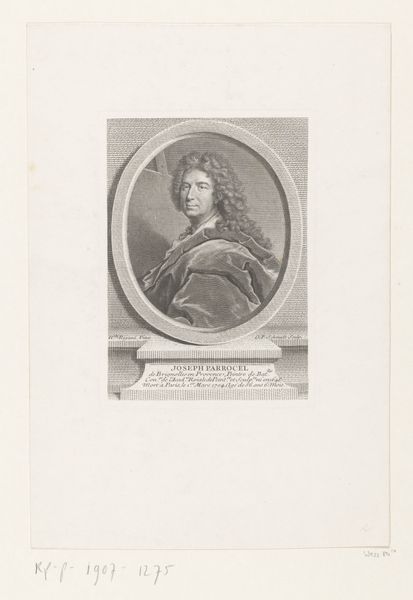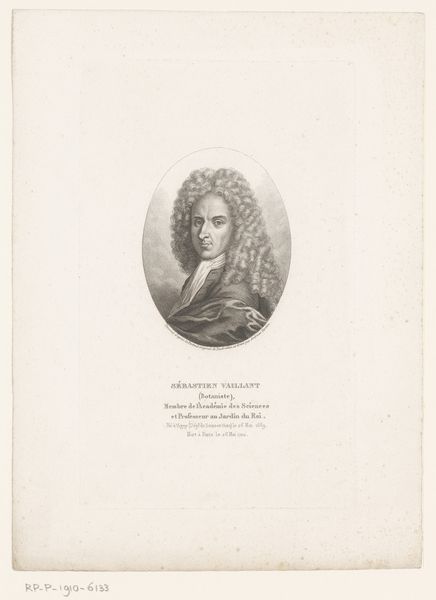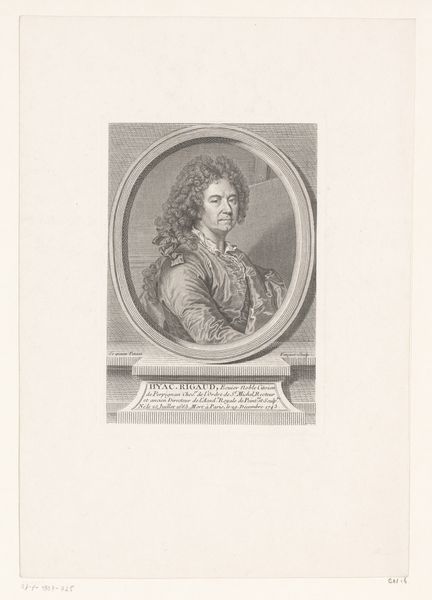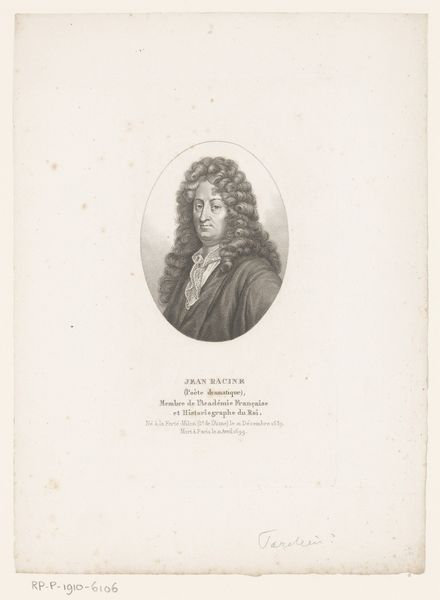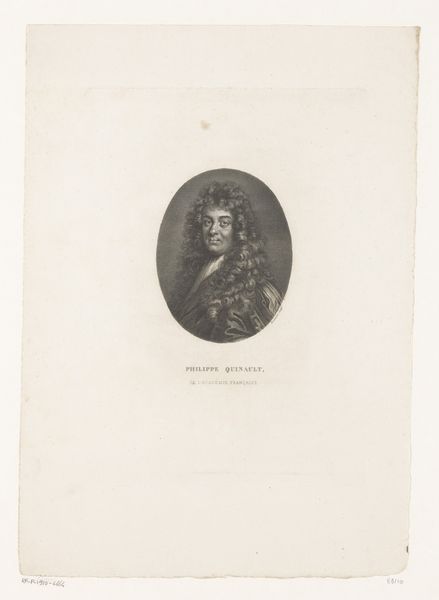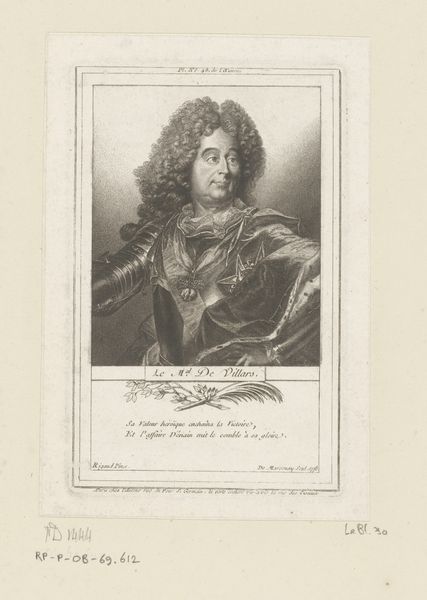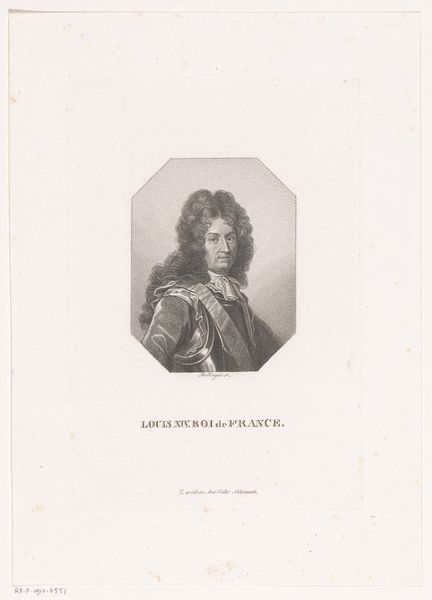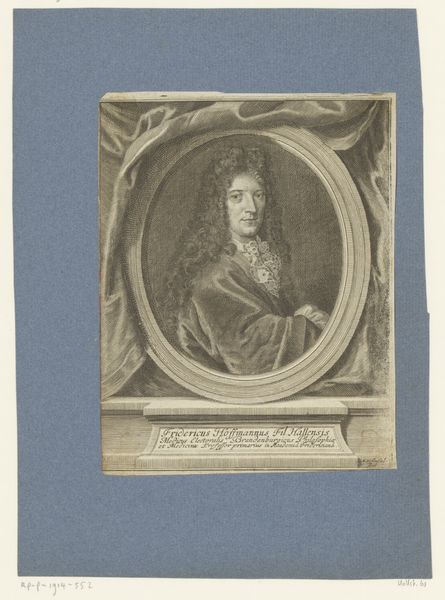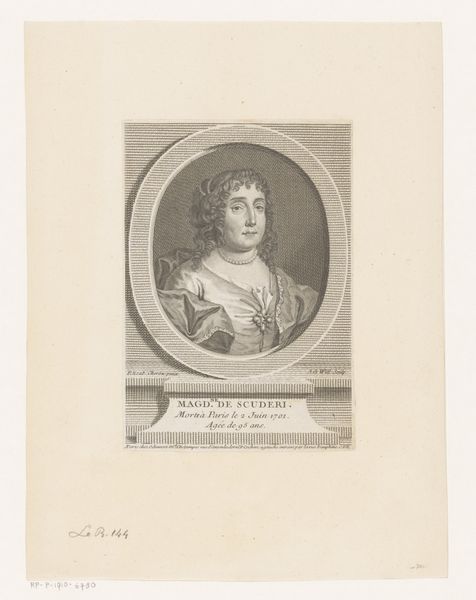
engraving
#
portrait
#
history-painting
#
academic-art
#
engraving
Dimensions: height 187 mm, width 126 mm
Copyright: Rijks Museum: Open Domain
Editor: Here we have Alphonse Boilly's 1822 engraving, "Portrait of Duke Philip of Orleans." It’s striking how the subject seems almost floating in this oval frame. What can you tell me about what we're seeing here? Curator: Look closely at how Boilly uses the oval. It's not merely a decorative frame. Think of it as a symbolic window. The oval, a shape suggesting both wholeness and containment, often represents the soul or spirit in art. The Duke is presented to us not just as a man, but as an icon of leadership and status, separated, yet still present. Editor: So, it's less about realistic representation, more about symbolism? Curator: Precisely. And note the armour – what does that evoke for you? Editor: Well, war, protection... power? Curator: Exactly! But beyond the literal, armour is a psychological symbol. It signifies the layers we construct around ourselves, our vulnerabilities masked by a façade of strength. Consider how Boilly positions the armour almost confrontational. What aspects of Philip might Boilly be trying to draw attention to? Editor: Perhaps his authority or the image he wanted to project? Curator: Think about how power is presented in art across history; it is designed to convey particular information. The details, though small, build a complex narrative. Boilly masterfully uses engraving here to layer cultural memory and continuity into this “Portrat”. Editor: I see now that the seemingly simple frame is actually a tool for conveying meaning! Curator: Absolutely! These visual echoes across centuries invite a richer understanding, every viewing.
Comments
No comments
Be the first to comment and join the conversation on the ultimate creative platform.
